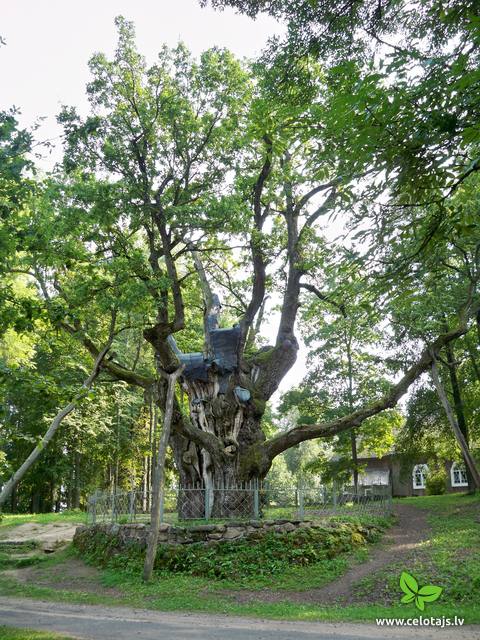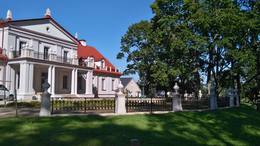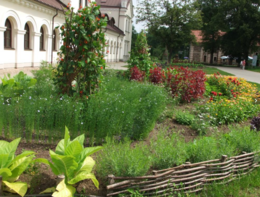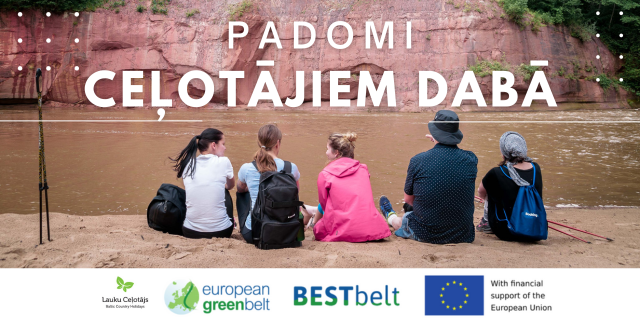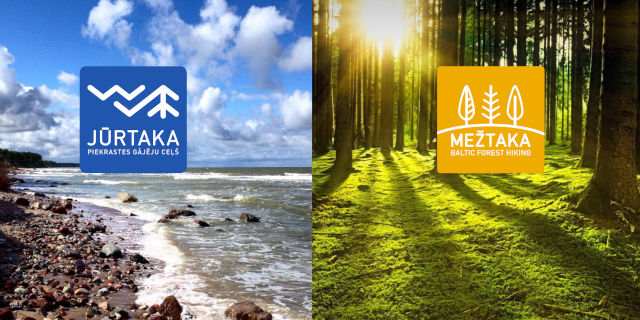Dabas objekti Lietuvā
Ar ko ievērojama daba Lietuvā?
Kuršu kāpa – tuksnešaina zemes strēle starp Baltijas jūru un Kuršu jomu, Žemaitijas pauguraines ainavas, Aukštaitijas ezeru zilo spoguļu labirinti, Dzūkijas priežu sili, Nemunas ielejas loku ainavas un daudzie reģionālie dabas parki, kas veidoti ne tikai dabas aizsardzības, bet arī sabiedrības izglītošanas un atpūtas nolūkos, ir tie dabas vērtumi, kas dabas tūristus piesaista Lietuvā.
Lai uzzinātu vairāk par apmeklējamām teritorijām aicinām izmantot vides vai vietējo gidu pakalpojumus.
Esiet saudzīgi pret dabu ceļojuma laikā - ievērojiet Zaļos padomus!
| Pārskats | Detaļas |
|---|---|
|
Lietuva
Šeires dabas taka (Šeirės gamtos takas)Četrus kilometrus garā lokveida un marķētā dabas taka meklējama Plateļu pilsētiņas ziemeļaustrumu daļā. Tā ved pa dažādiem biotopiem – mežu, purvu, ezera malu, atklājot dažādas ainavas un tajās mītošās augu, putnu un dzīvnieku sugas. Šī ir interesantākā un ainaviskākā no Žemaitijas nacionālā parka takām. |
|
|
Lietuva
Gārņu kalns (Garnių kalnas)Aiz Jodkrantes (Nidas virziens) ceļa labajā pusē ir izveidots autostāvlaukums un labiekārtota vieta, no kuras apskatāma Lietuvas (atrodamas ziņas, ka arī Eiropas) lielākā zivju gārņu Ardea cinerea un jūras kraukļu Phalacrocorax carbo kolonija, kur kopā varētu būt ~ 3000 putnu. Neaizmirstiet līdzi paņemt tālskati! |
|
|
Lietuva
Gražutės reģionālais parksVeidots Augštaitijas augstienes ainavu un ezeraines, sugu un biotopu aizsardzībai. |
|
|
Lietuva
Tauragns (Tauragnas)Ap 9,5 km garais un līdz kilometru platais ezers atrodas subglaciālā – t.i. ledāja veidotā vagā, tādēļ tas ir ne tikai Lietuvas, bet arī otrs Baltijas dziļākais ezers (pēc dažādiem avotiem 60,5 m vai 62,5 m). Tauragna dienvidu krastā paceļas Taurapils pilskalns (Taurapilio piliakalnis). Saglabājušies nostāsti gan par pagānu priesteri, kas te dzīvojis, gan nogrimušu baznīcu, gan laikiem, kad pilskalnu no visām pusēm apņēmis ūdens. No pilskalna plakuma paveras visaptverošs skats uz Tauragnu. |
|
|
Lietuva
Ūla (Ūla) un Merķe (Merkys)Ūla ir viena no skaistākajām un likumsakarīgi – arī populārākajām Lietuvas ūdenstūristu upēm. Tās galvenā pievilcība ir skaistā ainava ar augstajiem upes krastiem, kuros slejas iespaidīgas smilšu kraujas līdzīgi kā Irbes krastos Latvijā. Laivošanu var sākt no Mančagires (Mančiagirė) vai Zervinos ciemiem un turpināt līdz Ūlas ietekai Merķē un tālāk pa Merķi līdz pat Merķinei un Nemunai. Ūla nav plata, taču posmā no Zervinos ciema tajā nav neviena koku aizgāzuma vai cita šķēršļa, kuram laiva būtu jānes apkārt. Ašā straume, asie līkumi, dzidrais ūdens un tajā redzamā zemūdens pasaule rada patiesi patīkamu sajūtu! Upes krastos atrodas gan publiskas (apsaimnieko Lietuvas valsts meži), gan privātas ūdenstūristu apmetnes un atpūtas vietas. Šī ir vienīgā Baltijas upe, kur ūdenstūristiem ir jāpērk licence. Ūlas krastos atrodas divi interesanti apskates objekti – Ūlas atsegums (Ūlos atodanga) un spēcīgs avots – Ūlas acs (Ūlos akis). Savukārt, Merķe jau ir jau krietni platāka upe, taču ar acīm redzamu straumi un dažviet pat jaukām straujtecēm. Kaut arī Merķes krasti ir mazapdzīvoti, tajos atradīsim piemērotas nakšņošanas vietas. Pa Ūlu un Merķi no Zervinos līdz Merķinei sanāk „mierīgs” pusotras - divas dienas ilgs brauciens. |
|
|
Lietuva
Ilzenbergas muižas parksJaukta plāna Ilzenberga muižas parks, izveidots 19.gs. otrajā pusē, ir palicis tāds pats līdz mūsdienām. Gleznaina, izteiksmīga reljefa vietā starp Ilgio un Apvalasa ezeriem. Atjaunojot parku, saglabāta bijušā parka telpiskā struktūra. Parks aizņem 10 ha teritoriju un ir veidots no divām daļām. Pirmā – tā ir salīdzinoši prezīca tainsstūra formas teritorija blakus muižai, apjozta ar mazlapu liepu rindām un ainaviski izvietotiem vietējo un introducēto koku sugu stādījumiem. Otrā daļā – dabiskā meža tipa stādījumi. Lielākais Ilzenberga muižas parkā augošais ozols ir pasludināts par valsts apskargājamo dabas mantojuma objektu. Šī varenā koka stumbra apkārtmērs – 6.3 m, diametrs – 2 m, augstums – 30,5 m. |
|
|
Lietuva
Anīkšču reģionālais parksParka „mugurkauls” ir Šventojas (Šventoji) upes (tulkojumā – Svētā upe) ieleja. Šventojas krastā ir apskatāms viens no Lietuvas iespaidīgākajiem Devona perioda smilšakmens atsegumiem - Vetygalos atodanga, bet Varius strauta krastos – kvarca smilšu atsegums - Variaus atodanga. 6 km dienvidos no Anykščiai atrodas otrs Lietuvas lielākais dižakmens (5,7 m augsts, ~ 100 m3) – Puntukas akmuo.
|
|
|
Lietuva
Kuršu kāpu nacionālais parksVeidots Kuršu kāpas (lielākais kāpu veidojums Baltijas valstīs), piekrastes, biotopu, sugu, kultūrvēsturiskā mantojuma un kurortoloģisko resursu aizsardzībai. Vienīgā vieta Baltijā, kur tik lielā teritorijā var apskatīt klajus kāpu smiltājus, kas joprojām ir aktīvi un vēja ietekmē veido t.s. eolās reljefa formas. Te atrodas Baltijā vienīgais Jūras muzejs un Delfinārijs. |
|
|
Lietuva
Seredžiaus pilskalnsViens no ainaviskākajiem Nemunas pilskalniem ar skaistu skatu uz upes ieleju. 13. – 14. gs. šeit atradās militārs nocietinājums (nav saglabājies). |
|
|
Lietuva
Enerģētisko labirintu un ģeometrisko figūru parksParkā izveidoti pieci labirinti, saposti ar dekoratīviem augiem, apstādīti puķēm, ārstniecības zālēm – mārsiliem, flokšiem, peonijām, tauksaknēm, asinszālēm, jasmīniem, cidonijām, spulgnaglenēm, kurpītēm, raudenēm, estragonu, prīmulām, strutenēm, staģēm, mētrām, zeltslotiņu, vīgriezēm u.c. Garākais labirinta ceļš – 1.7 km garš. Vēloties iziet visus piecus šobrīd iekārtotos labirinatus, tas aizņemtu četrarpus kilometrus. Parkā izveidotas trīs ģeometriskas figūras – kupols, mandala, merkaba. |
|
|
Lietuva
Šarneles (Zviedru) pilskalns (Šarnelės (Švedų) piliakalnis)Viens no iespaidīgākajiem nacionālā parka pilskalniem, kura piekājē atradusies senpilsēta. Arheoloģisko izrakumu gaitā te atrastas kuršu senlietas. Tiesa, mežs un biezais augājs traucē uztvert šī nozīmīgā arheoloģijas pieminekļa patiesos apjomus un formu. Uz pilskalnu vasarās ved izpļauta taka. Ja esat Žemaišu Kalvarijas pusē un atliek brīvs brīdis, tad savā maršrutā var iekļaut arī šo apskates objektu. |
|
|
Lietuva
Traupja botāniskais dārzsVienīgo skolas botānisko dārzu Lietuvā sāka iekopt 1989. gadā Traupja skolā. Visas augu kolekcijas (kopumā Traupja botāniskajā dārzā aug jau vairāk nekā 8000 augu sugu, formu un šķirņu) ir savācis viens cilvēks – S. Obelevičus. |
|
|
Lietuva
Ventas reģionālais parksVeidots Ventas upes ielejas un tās pieteku krastu ainavas aizsardzībai. Papilē (Papilė) Ventas labā krasta nogāzē atrodas Baltijas mērogā unikālais un apskatei labiekārtotais Juras perioda atsegums (pazīstams kopš 1925. g.), kura slāņos atrastas un aprakstītas > 300 dažādas dzīvības formas.
|
|
|
Lietuva
Klaipēdas Universitātes botāniskais dārzsBotāniskais dārzs dibināts 1993. gadā gleznainajā Danes upes ielejā. Tas aizņem aptuveni 9,3 hektārus. No 2002.gada dārzam piešķirts dendroloģiskā parka statuss. |
|
